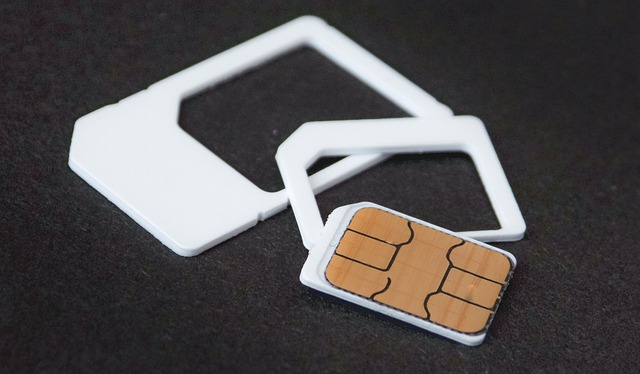Hearing Aids 101: What to Know Before Buying
Buying a hearing aid can feel overwhelming with so many options, features, and price points available. This guide simplifies the process — explaining how hearing aids work, the different types available, and what to consider before purchasing. From technology and comfort to cost and maintenance, discover everything you need to make an informed decision and find the right device for your hearing needs.

If you’ve noticed difficulty hearing conversations, missing phone calls, or turning up the volume on your television more frequently, it may be time to consider a hearing aid. Hearing loss affects millions of people, and modern hearing aids offer advanced technology to improve quality of life. However, navigating the options, understanding costs, and knowing what features matter most can be challenging. This comprehensive guide provides essential information to help you make a confident, informed choice when selecting a hearing aid that meets your needs.
What Are the Different Types of Hearing Aids and Features?
Hearing aids come in various styles, each designed to address different levels of hearing loss and personal preferences. Behind-the-ear (BTE) models are among the most common, sitting behind the ear with a tube connecting to an earpiece. These are suitable for all ages and most types of hearing loss. In-the-ear (ITE) devices fit directly in the outer ear and are custom-molded for comfort. In-the-canal (ITC) and completely-in-canal (CIC) styles are smaller and less visible, fitting partially or entirely inside the ear canal. Receiver-in-canal (RIC) models combine the benefits of BTE and ITE designs, offering a discreet appearance with powerful amplification.
Modern hearing aids include features like directional microphones that focus on sounds in front of you, noise reduction to filter background noise, and feedback suppression to eliminate whistling sounds. Many devices now offer Bluetooth connectivity, allowing you to stream phone calls, music, and television audio directly to your hearing aids. Rechargeable batteries have become increasingly popular, eliminating the need for frequent battery changes. Some advanced models include artificial intelligence that learns your listening preferences and automatically adjusts settings based on your environment.
How to Choose the Right Hearing Aid for Your Needs
Selecting the right hearing aid begins with a comprehensive hearing evaluation by a licensed audiologist or hearing specialist. This assessment determines the type and severity of your hearing loss, which directly influences which devices will be most effective. Consider your lifestyle and daily activities when evaluating options. If you frequently attend social gatherings or work in noisy environments, prioritize models with advanced noise reduction and directional microphones. For those who are tech-savvy, Bluetooth-enabled devices offer convenient connectivity.
Physical factors also matter. Dexterity issues may make smaller in-canal models difficult to handle, while larger BTE styles might be easier to insert and remove. Consider whether you prefer rechargeable batteries or disposable ones based on your routine. Aesthetics play a role for many people, with some preferring discreet, nearly invisible options while others prioritize functionality over appearance. Discuss your preferences openly with your hearing care provider, who can recommend devices that balance your hearing needs, lifestyle requirements, and budget constraints.
Understanding Hearing Aid Cost and Maintenance Guide
Hearing aid costs vary significantly based on technology level, features, and provider. Basic models typically range from $1,000 to $2,000 per device, offering essential amplification without advanced features. Mid-range devices cost between $2,000 and $4,000 per aid, including features like noise reduction, directional microphones, and multiple listening programs. Premium hearing aids range from $4,000 to $6,000 or more per device, featuring the latest technology including artificial intelligence, superior sound processing, and extensive customization options. Most people require two hearing aids, which doubles these costs.
| Provider Type | Services Offered | Cost Estimation |
|---|---|---|
| Audiologist Clinic | Comprehensive testing, fitting, follow-up care, adjustments | $2,500 - $6,000 per aid |
| Hearing Aid Dispenser | Device sales, basic fitting, limited follow-up | $1,500 - $4,500 per aid |
| Online Retailer | Direct-to-consumer sales, remote programming | $500 - $2,500 per aid |
| Big-Box Retailer | Standardized fittings, package deals | $1,000 - $3,500 per aid |
Prices, rates, or cost estimates mentioned in this article are based on the latest available information but may change over time. Independent research is advised before making financial decisions.
Maintenance is crucial for hearing aid longevity. Daily cleaning removes earwax and debris that can damage components. Use a soft, dry cloth and specialized cleaning tools provided by your audiologist. Store devices in a dehumidifier case overnight to prevent moisture damage. Replace wax guards and filters regularly, typically every few weeks. Disposable batteries last 3-10 days depending on usage and device type, while rechargeable batteries need nightly charging. Professional cleanings and adjustments should occur every 3-6 months. Most hearing aids last 3-7 years with proper care, though technological advances may prompt earlier upgrades.
Additional Factors to Consider Before Purchasing
Insurance coverage for hearing aids varies widely. Medicare typically does not cover hearing aids, though some Medicare Advantage plans offer partial coverage. Private insurance policies may provide allowances ranging from $500 to $3,000 per aid every few years. Veterans may qualify for free or subsidized hearing aids through the VA. Flexible spending accounts (FSAs) and health savings accounts (HSAs) can be used for hearing aid purchases, reducing out-of-pocket costs through pre-tax dollars.
Warranty and trial periods are important protections. Most hearing aids include a manufacturer warranty covering repairs and replacements for 1-3 years. Many providers offer 30-60 day trial periods, allowing you to test devices in real-world situations with the option to return them if unsatisfied. Ask about loss and damage insurance, which typically costs $100-$300 annually but can save thousands if your device is lost or broken.
Making Your Final Decision
Taking time to research, consult with professionals, and understand your options leads to better outcomes. Don’t rush the decision or feel pressured by sales tactics. Compare multiple providers, read reviews, and ask detailed questions about costs, services, and support. Consider the total cost of ownership, including batteries, maintenance, and follow-up appointments, not just the initial purchase price. A hearing aid is an investment in your health, communication, and quality of life. With proper research and professional guidance, you can find a solution that restores your hearing and fits comfortably within your lifestyle and budget.
This article is for informational purposes only and should not be considered medical advice. Please consult a qualified healthcare professional for personalized guidance and treatment.




